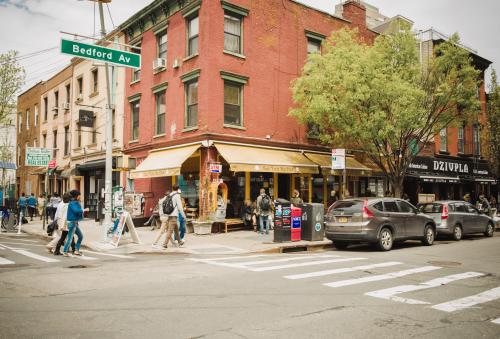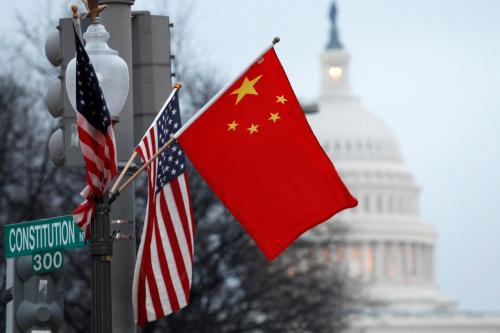What is the role of cities in assuring that their residents have the affordable bandwidth necessary to thrive in the 21st century information economy? Municipal governments—more than other jurisdictions—will directly affect the cost of deploying fiber, the foundation for the abundant bandwidth that will serve next generation networks like 5G Mobile and the Internet of Things. Yet with a huge range of choices on how to influence their local broadband market, governments can struggle to understand how best to proceed.
Into that breach arrives a new report entitled “Municipal Fiber in the United States: An Empirical Assessment of Financial Performance” by Christopher S. Yoo and Timothy Pfenninger of the University of Pennsylvania. Its stated purpose is to help municipalities by filling an “information gap by conducting a systematic analysis of every municipal fiber project in the United States.” Critically, the report concludes that the projects are money losers.
I’m certain the report will provide sound bites for opponents of such projects. Unfortunately, for municipal leaders seeking a map for the path forward, it is both largely irrelevant and misleading.
First, the report fails to provide an accurate accounting. The authors admit, “The high-level analysis presented in this study may overlook key details that can help explain the results in particular cases. In addition, the financial performance of some of these projects may improve in the future.” Indeed, as half the networks studied in the report are still in development or recently launched, their expected negative cash flow skews the analysis. The report makes other analytic errors. As the authors admitted after they published the report, they inaccurately assumed that the cities of Lafayette, La., Chattanooga, Tenn., and Wilson, N.C. incurred debt balloon payments that, in fact, do not exist. Even worse, the authors overlooked bond upgrades like in Chattanooga specifically related to fiber deployments.
But the greater error is one of design. By relying strictly on limited financial accounting to judge economy-shaping infrastructure, the report overlooks the long-range problems municipal leaders are trying to address, the options they consider, or the wider benefits they hope to achieve.
Having worked with many governments aiming to deploy fiber, every place shared the same goal of having enough bandwidth to ensure it never constrain economic growth or social progress. Some communities believe existing market forces will solve that problem and therefore take no action. Many others believe the market response will be too slow or otherwise inadequate and therefore evaluate ways to accelerate the deployment of next generation networks.
In doing so, communities look at a wide spectrum of options, from the largely private sector driven deployments (such as in the Research Triangle Park area of North Carolina), to a dark fiber/middle mile approach (such as in Lincoln, Neb. or San Leandro, Calif.), to a full service model like in Lafayette, La.— with many options between each of these. Each option has trade-offs relating to risk, control, coverage, and economic and/or social impact, among others. Each community starts in a different place, with different priorities and assets.
The report, however, ignores most of the options, focusing solely on the full service model. The authors are not wrong in suggesting ownership has its risks, but failing to evaluate alternatives hardly qualifies as filling an information gap.
Another grievous error is failing to consider the externalities at the heart of the communities’ efforts. The report bases its conclusion on just one question: does the effort produce positive cash flow?
Not only is the report’s math wrong in answering the question; it’s a misguided way to evaluate urban infrastructure initiatives. Cities invest in many facilities that are not designed to make a profit, from sports stadiums and convention centers to airports and museums. Cities are not indifferent to the economics of such projects, but the bottom line is not strictly enterprise solvency. Especially for infrastructure like broadband, the network effects and spillovers should contribute to the economic and social life of the community. In this regard, the report ignores what others have found, such as next generation networks increasing property values and GDP, and becoming a key asset for economic development.
The authors also ignored competitive pricing economics. For example, the upgrade to gigabit networks has set off a competitive dynamic that lowers prices for lower speed services; with an estimated drop of $27 a month for 100Mbps and $13 to $18 a month for speeds 25Mbps or slower. If the authors wanted to paint an accurate picture of the economics, they would have included the price benefits to the community residents in their calculations.
Their ignorance also extended to market size: all the studied cities but two are under 100,000 persons.
Their ignorance also extended to market size: all the studied cities but two are under 100,000 persons. These are towns that are caught in an unfortunate bind. They are likely too large for the federal government to finance their local telephone company to upgrade to next generation fiber, but too small to attract a Google or a Ting, or get the kind of incumbent upgrade that AT&T and Comcast are doing in Atlanta or CenturyLink and Cox are doing in Omaha. These communities chose to proceed because the real economics for their communities meant that if they didn’t act, they would fall behind in a world in which abundant bandwidth is the new table stakes.
The authors suggest the communities shouldn’t worry because no one needs higher speeds. The authors are out of touch with how the market is causing conglomerates, from Comcast to AT&T to Verizon to others, to bring higher speeds to larger communities and what experts project for the future. They are also out of touch with how voters throughout the country, including rural Trump territories, are saying they want local communities to be more aggressive in bringing next generation networks to their areas.
We can’t yet know the final chapters in the book on how every American community will obtain the next generation bandwidth they need. But the early chapters are already written, in which hundreds of cities—beginning with how Kansas City changed its construction management practices to attract Google Fiber—have innovated to drive the deployment of affordable, abundant bandwidth.
In working with many of them, I often thought of something a partner told me in my first year of practicing law in North Carolina: “Never develop your theory of the case until you understand the problem your client is trying to solve.” It’s a shame that the authors narrowly focused their gaze on Excel spreadsheets while ignoring how markets and communities are responding to the need for more abundant bandwidth. The report’s core message—which can be summarized as ‘let them eat DSL’—is one that does not deserve serious attention from cities.
The Brookings Institution is committed to quality, independence, and impact.
We are supported by a diverse array of funders. In line with our values and policies, each Brookings publication represents the sole views of its author(s).







Commentary
New report swings and misses on communities and next generation broadband
June 29, 2017